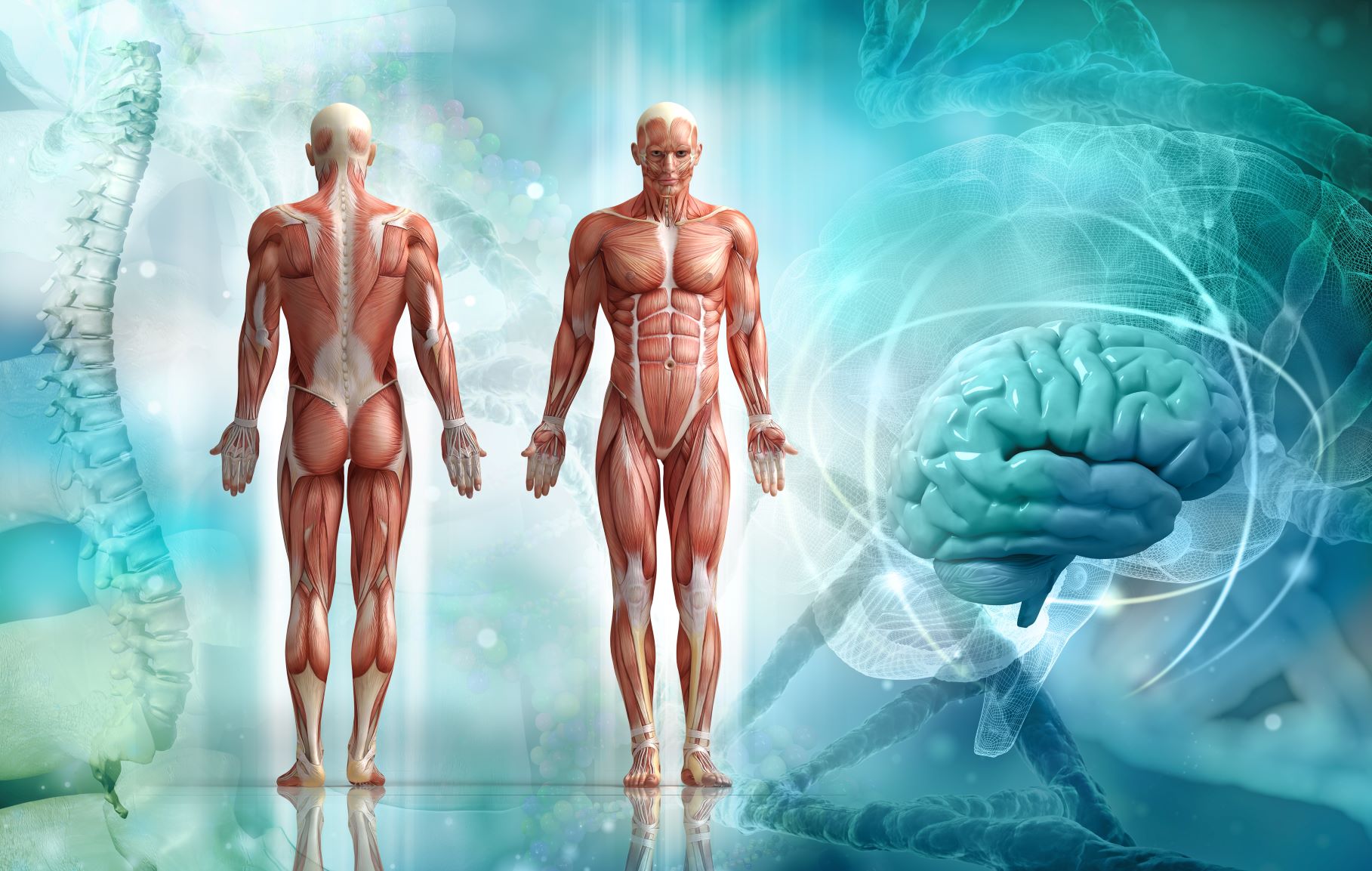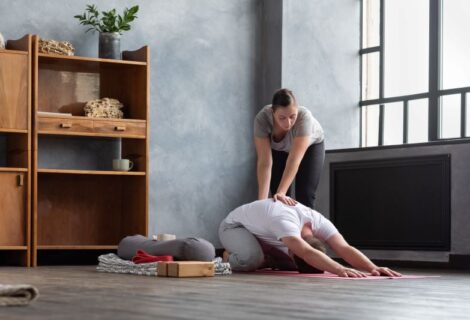Is Your Posture Straight or Does Your Brain Just Think So?
Let’s talk posture as it’s a frequent conversation point with my teenage sons. I see them
hunched over their laptops for homework, and slouching on the couch for video games.
Thankfully, we limit the techno time in exchange for exercise and fresh air, but as a massage
therapist, I know exactly what those daily forward folding positions can do to a body.
Posture is the position our body holds in space, whether we are standing, sitting, or even lying
down. Good posture means that the body’s structure aligns with balanced muscle tone (no
straining or pulling). Ideally, your ears would align with your shoulders in a relaxed state – not
with your shoulders aligning up into your ears. (That’s very different.) Your spine maintains its
natural curves (there are three of them) with hips balanced over knees, and over balls of the
feet. While sitting, we need an upright torso, legs hip width apart with both feet on the ground
and about a 90 degree bend at the knee. Pardon me while I uncross my legs….
Maintaining good posture is difficult as we move and adapt ways of moving, standing, and sitting
to our comfort zone over time. Especially if we’ve suffered an injury, we adapt to accommodate
that injury, comfortably, while still moving (or sitting) through space. This means that we cross
our legs and sit more onto one hip than the other; or we stand with more weight on one leg and
arms crossed. Any number of positions happen automatically, or unconsciously…as our brain
decides our fate.
Your brain cares very much about your safety. It does not want to fall, or be upside down, or
leaning to the benefit of gravity. It constantly makes micro (and sometimes macro) corrections to
your body to be certain that you are standing and moving upward – straight, forward – eyes on
the horizon.
But this requires muscles to engage for positional shifts, perhaps causing a long-term tightening
or even twisting of the body. I give you this example: A woman falls, injuring her right hip and
causing an upslip of the right pelvis. This closes the space between the hip and the ribcage,
drawing the ribs downward. If her head and shoulders follow the downward pull, then the brain
believes she is falling to the right. Remember – the brain says no falling! So the brain adjusts the
left side body to contract, pulling the left shoulder down and the head returns to a normal
position. But over time, this left side contraction starts to hurt so the body compensates for a
new way of moving to ease the pain. The body folds forward, but now the brain says it’s falling
forward, so it moves the neck back and up.
All of this happens without your awareness and you may think you have good posture – because
your body feels good and you are not falling – but actually you may just have “good brain” and
tired muscles.
So how do you know if you have good posture? Begin by bringing awareness to your body. Look
in a mirror and assess; ask friends or family to review your standing and sitting positions. If
you’ve been out of alignment for a long period of time, then being in alignment will feel very
foreign and possibly uncomfortable at first. Remember, your brain and body worked in tandem
to create these postural changes for a reason – comfort and safety. Practice some
self-compassion as you shift your body into its preferred position.
Good posture benefits more than just muscle and skeletal well-being. According to webMD,
Good posture can improve your mood, self-confidence and energy levels while also fighting
back pain, fatigue and headaches. Best yet, you can breathe better – fuller, deeper breaths that
further energize and are calming to the nervous system.
Where should you start? The best advice I’ve heard recently is this: “put the pointy bottom parts
of your shoulder blades (scapula) in your back pockets”. Did you try it? Did you feel the
immediate shift as your shoulders moved down and back, chest relaxed and spine felt more
aligned with the pelvis? I know I do, and I’ve seen my sons do this when they get out of the car
or rise from a sitting position.
Along with awareness, add a therapeutic massage to your self-care. A great massage therapist
can deepen your awareness, by bringing your attention to tight areas in the body and holding
patterns that exist. A massage can also begin to bring these postural differences into alignment,
when done in tandem with your efforts to adjust and move (and sit) with conscious awareness.







